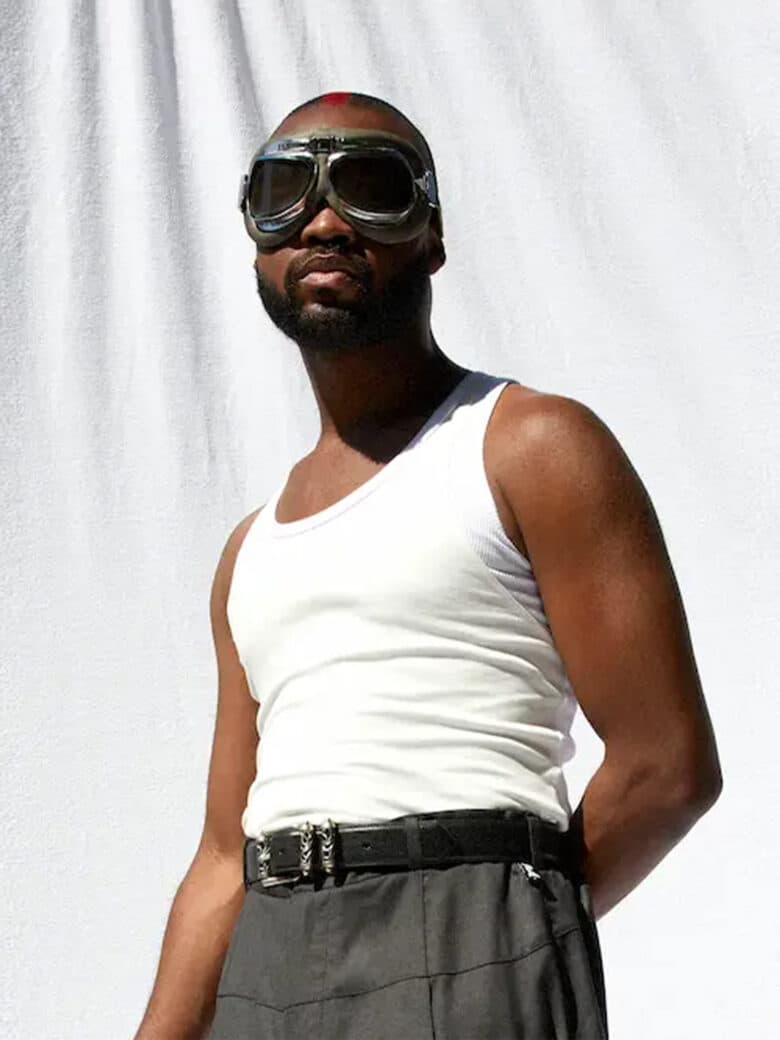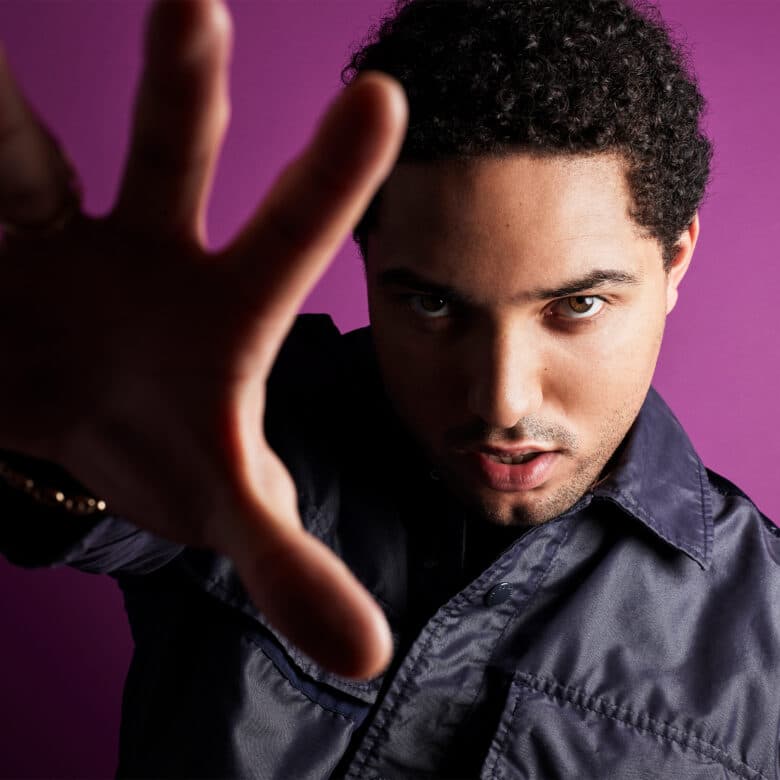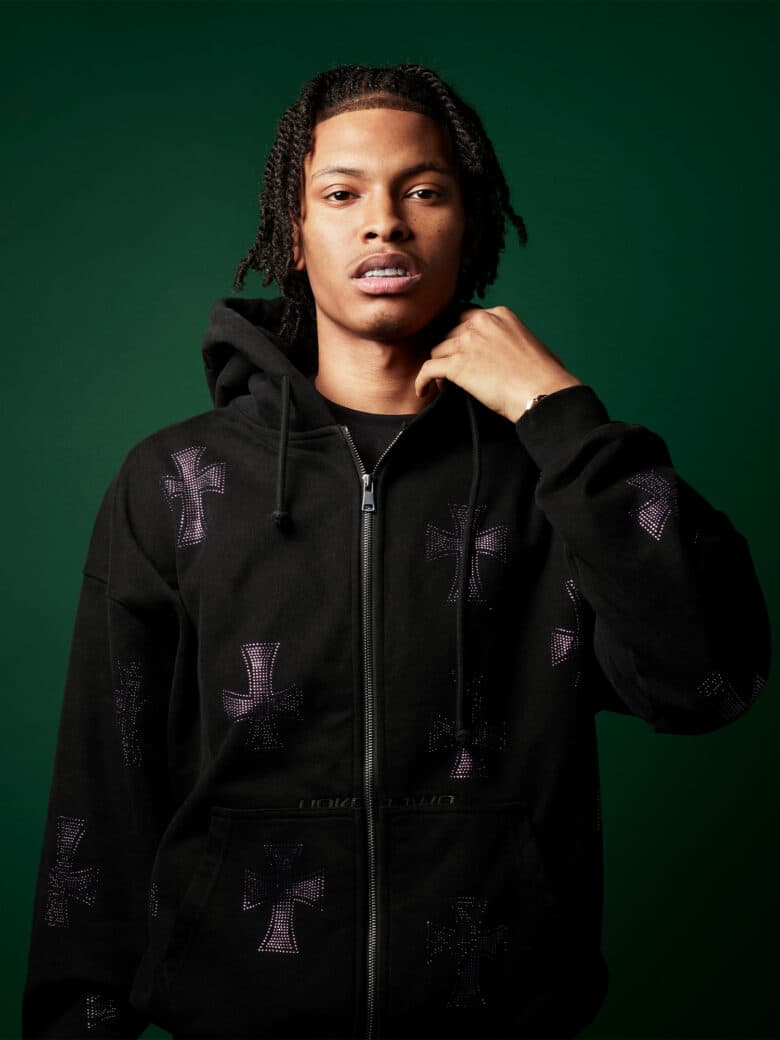Five Minutes with Raf-Saperra: The rising musician combining Punjabi folk with East Coast hip-hop

It’s been just over two months since genre-bending rap chameleon Raf-Saperra released his latest EP, 5 Deadly Venomz – a trifecta of Punjabi folk, grimy East Coast raps and London swagger. It’s a love letter to all the sounds that have helped shape Saperra’s sparse musical palette, cementing himself as an unignorable global rising star. And while many musicians fail through their awkward implementation of various styles, Saperra manages to sidestep that possibility through his authentic connection and appreciation of each of the cultures he implements.
The artist, whose real name is Adeel Sardar Khan, was born in Streatham Hill in a Pakistani Muslim household. Growing up, Saperra would find himself drawn to the likes of Giggs and Roadside G outside of his home, while in it he was surrounded by everything from Punjabi folk to Bhangra. Saperra first began his musical journey when taking Hindustani (an Indo-Aryan language spoken in Deccan, Northern India and Pakistan) singing lessons as a teenager, as well as learning to play a number of traditional South Asian instruments. It was in 2020 that Saperra would begin to make his name in the world of music after videos of him singing traditional Punjabi folk songs began picking up momentum. Quickly, the musician’s humble presence of only a few hundred followers, rose to thousands, and Saperra’s infectious, powerful vocals and unique blending of sonics presented a much-needed breath of fresh air in the UK’s stagnant underground.
Now, his stature has grown so large that New York legend and Griselda member Conway The Machine – who Saperra counts as one of his biggest influences – made an appearance on his latest project, marking his first collaboration with a South Asian artist. His musical maturity is on full display, and the project’s opener ‘Rolling Thunder’ acts as the perfect precursor of what’s to come – a high-octane whirlwind and combination of unlikely worlds across five punchy tracks. 5 Deadly Venomz is Saperra at his most efficient, utilising every bar, melody and pocket throughout its short runtime, eliminating any opportunity for things to get stale, and presenting the polish the artist has become notorious for in his short time in the industry.
Here, we sit down with Saperra to discuss his latest EP, collaborating with his idols and how his Punjabi heritage has influenced his sound and style.

It’s now been over two months since the release of your 5 Deadly Venomz EP, now that you’ve had time to sit on it, how are you feeling about the reception? Are you someone who likes to keep an eye on people’s reactions?
I’m 100% the type to keep an eye on reactions (to begin with) and then I leave that piece of art to grow and flourish without constant supervision. Despite this EP being a passion project and an extremely important brushstroke to the soundscape I’m painting, it was undeniably a personal ‘side mission’. This is only my third year releasing music as a recording artist, this is only my second body of work and I had curated this with zero intentions of making this commercial or radio-friendly which is something extremely risky to do this early on in one’s career! Despite all of that I’m taken aback by the phenomenal response the EP has had, especially in India, the USA and Canada.
Where did the inspiration for the title come from? Did it have something to do with the Five Deadly Venoms film?
The title of this project is a head nod to cinema and hip-hop. This is named after the classic Shaw Brothers kung-fu flick and the 5 Deadly Venoms of Brooklyn mixtape released in 1997 created by five New York City DJs, P.F. Cuttin’, Mister Cee, Tony Touch, DJ Premier and Evil Dee.
Could you describe your creative process for this project? What do you think differentiates it from your previous releases?
I always knew that this tape in its entirety would be deeply marinated with a dark, grimy, underground East Coast hip-hop sound fused with Punjabi folk but in all honesty, the sound was feeling forced. I wasn’t convinced with what we had produced in London. What differentiates this release from my other work is the workflow that was adopted or even discovered. The producers of this EP, Bobby Kang and Taj Aulakh, were travelling with me in May 2023. This was Taj and I’s first time visiting NYC. We moved around a lot of different projects and boroughs from Queens, and Brooklyn to the Bronx and continued making beats in these areas. We let the atmosphere in New York and its inner cities lead the direction of the feel behind this project. Once we did that, the tape started revealing itself. It felt organic. It felt divine.
As you mentioned, the project is heavily influenced by East Coast rap – what is it about that sound that resonates with you so deeply?
I’ve just been more susceptible to that East Coast sound. Just my personal taste. Despite how much the sound developed from the mid 80’s to ’96 there was still a heavily earthy and tribal weight and texture to East Coast production. Being a massive fan of Biggie and Wu-Tang I was also drawn towards the percussive wordplay and off-beat rhyme style that was coming out. Shit loads of maths and science.
Of course, your use of traditional Punjabi sounds is prevalent once again on this record, at what point did you first start to incorporate that into your music, or was it something you did from the start?
This is something I’ve always done from the start. My music journey actually started from Instagram singing covers of Punjabi classics with an originally produced hip-hop beat as the backdrop. This started catching wildfire amongst Punjabi audiences and major blog pages and would continue living throughout my releases. I’ve released records dabbling in various genres from UK garage, Afro beats, Bhangra and hip-hop but there has been no compromise on the Punjabi. It’s the foundation.
How important is it to you to put your heritage to the forefront of your music?
For me what’s most important is representation. I don’t want to be a ‘heritage act’ that is given an opportunity within the parameters of being brown. I just want to be celebrated for good work as other artists are. I’ve approached my work taking elements from art film movements within cinema such as the French New Wave and Japanese Sun Tribe where I consciously reject certain traditional, cultural and – in my case – music-making conventions while simultaneously celebrating them too. These elements have led to me creating my own unique rum punch and perspective, ultimately creating a genuine cult following within the South Asian music stratosphere like no other British Punjabi artist has had in decades.
You’ve got the likes of Conway the Machine and Dave East on the project, how did those features come about and what was it like working with them?
It was amazing working with them. It all came about very organically which was extremely important, especially in the world of hip hop. None of this was forced and that’s why the songs have come out so dope. My homeboy from Brooklyn is friends with Dave East’s manager and Big Body Bes. We sent bro the instrumental for ‘Hood Harvest’ produced by Bobby Kang and they fucked with it heavy. I was in the studio with Dave East while he wrote out his bars on a notepad with a pen. I admired that. You can’t write poetry through a digital device. Big Body Bes didn’t even write anything down. Straight off the top of his head. He has a unique and unorthodox approach to his craft.
I’ve been a massive Griselda fan and anyone who knows me will know what Westside Gunn, Conway the Machine and Daringer mean to me. Con showed me mad love and I even got to gift him my debut record when we shot the video to ‘Rolling Thunder’ in Buffalo, NY! I’m the first Punjabi artist to have brought that Griselda feature into the world of Punjabi music. This feature was a massive deal for Punjabi hip-hop lovers and I was taken aback by how much of a dialogue this had created across social media once revealed.
How do you feel the London music scene, particularly hip-hop, has evolved over the past few years? Do you think it’s in a good place right now?
Massively. Ridiculously large. There was once a time we would never hear British artists on prime-time radio and now I’m walking into clothing stores in New York and Toronto hearing them blast Giggs, Central Cee and many others. Our culture, our slang and our street aura have been recognised across the Atlantic. I don’t think I’m too well versed in commenting on the development of the hip-hop scene in the UK but there is undeniably a massive hip-hop culture here in and in Europe. I feel the community may not be the biggest but it is definitely strong and heavily interlinked – even with our relations across the Atlantic, a great example would be artists like Beat Butcha and Da Fly Hooligan.
If you could collab with any artist right now, who would it be?
British Artist, Giggs. American Artist, Westside Gunn.
What was the last song to make you tear up?
‘Mein Tenu Yaad Aawa Gi’ by Surinder Kaur.
What’s been the most surreal moment for you in your career so far?
My debut world tour last year. Tickets and merch selling out in minutes. Packed out venues. The support has been aggressive thus far. I love that.
What’s the goal for you and your career?
Create honest and respectable art, gracefully bow out whilst it’s still on a high and take care of my family. Simple




